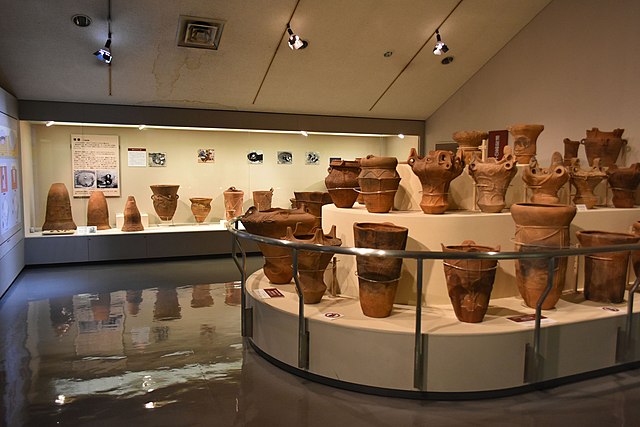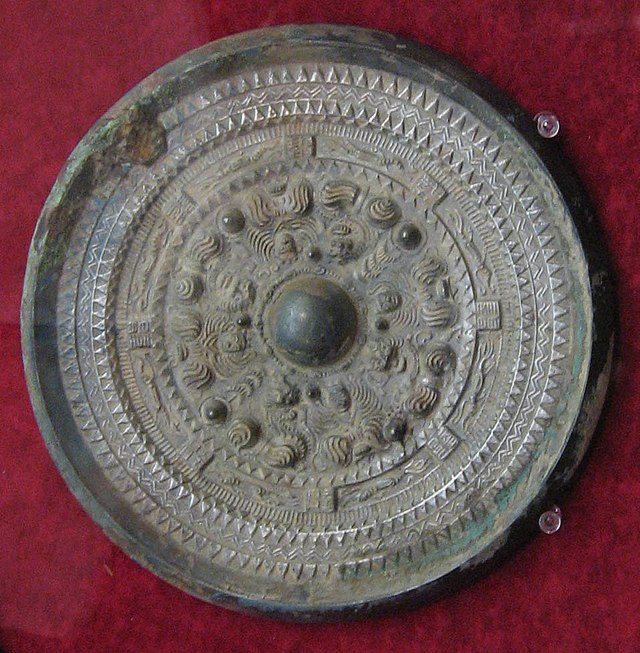Economic history of Japan
The economic history of Japan is most studied for the spectacular social and economic growth in the 1800s after the Meiji Restoration. It became the first non-Western great power, and expanded steadily until its defeat in the Second World War. When Japan recovered from devastation, it became the world's second largest economy behind the United States until 2010, when it was overtaken by China, followed by Germany in 2023. Scholars have evaluated the nation's unique economic position during the Cold War, with exports going to both U.S.- and Soviet-aligned powers, and have taken keen interest in the situation of the post-Cold War period of the Japanese "lost decades".
Historical GDP per capita development
Jōmon pottery in the Yamanashi museum
Reconstruction of Jōmon period pit-houses in the Aomori Prefecture
Shinju-kyo bronze mirror from Yayoi period excavated in Tsubai-otsukayama kofun, Yamashiro, Kyoto
The Meiji Restoration, referred to at the time as the Honorable Restoration , and also known as the Meiji Renovation, Revolution, Regeneration, Reform, or Renewal, was a political event that restored practical imperial rule to Japan in 1868 under Emperor Meiji. Although there were ruling emperors before the Meiji Restoration, the events restored practical abilities and consolidated the political system under the Emperor of Japan. The goals of the restored government were expressed by the new emperor in the Charter Oath.
Tokugawa Yoshinobu informs officials of his decision at Nijō-jō in 1867.
Emperor Meiji receives Dutch Minister-Resident Dirk de Graeff van Polsbroek in 1868.
Allegory of the New fighting the Old, in early Japan Meiji, around 1870







